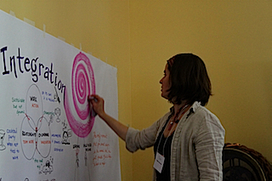Readiness indicators for evaluation
Get Started for FREE
Sign up with Facebook Sign up with X
I don't have a Facebook or a X account
 Your new post is loading... Your new post is loading...
 Your new post is loading... Your new post is loading...
|

Dr. Helen Teague's curator insight,
May 1, 2015 8:58 AM
A new term for me "peerogogy" - self organized peer learning. It attracted me because I'm doing organized peer learning and dabbling in self-organized peer learning.
I have been involved in an experiment of self-organized peer learning for the past 18 months with colleagues in social media and nonprofits - and this gives me some underlying research/frameworks/thinkers to connect to better understand it.
From the document:
According to Charles Jeffrey Danoff, writer, educator, and organizer at P2PU, peeragogy (which he refers to as “paragogy”), is a collection of “the best practices of effective peer learning.” (Paragogy: Synergizing individual and organizational learning) It is also a theory of peer-to-peer learning and teaching that addresses the challenge of peer-producing a useful and supportive context for self-directed learning.
Danoff is currently putting together a book on peeragogy, in which he outlines 5 principles that encompass what the growing movement has been trying to accomplish: Changing context as a decentered center.Meta-learning as a font of knowledge.Peers provide feedback that wouldn’t be there otherwise.Learning is distributed and nonlinear.Realize the dream if you can, then wake up!

Nancy White's comment,
December 23, 2011 12:48 PM
Beth, I'd love to share what I've learned doing these workshops some day!
|




























